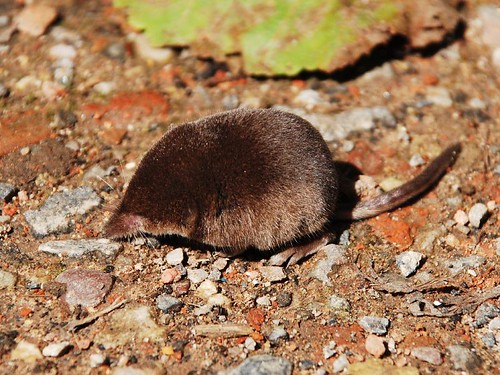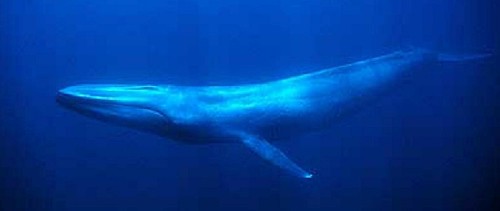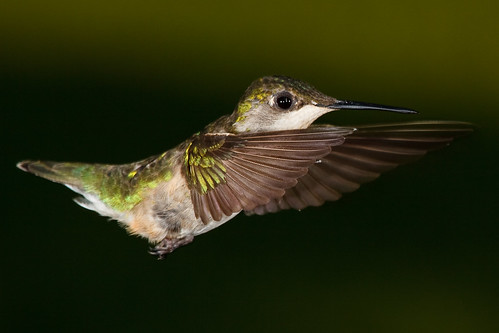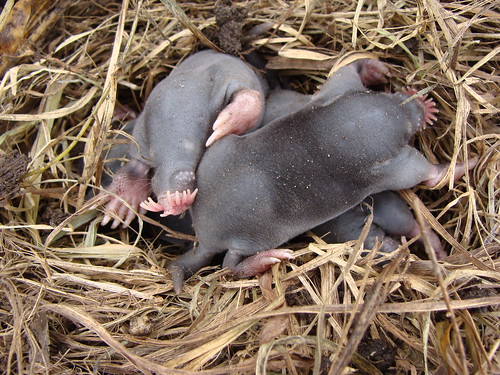Search Results for Tag: insects
The 5 hungriest animals
1. The American Pygmy Shrew (Sorex hoyi)
With a pulse clocking in at more than a 1000 per minute, the smallest mammal in North America really needs lots of food to keep its phenomenal metabolism going. Every day it eats three times its own weight. To do so it needs to constantly eat and never sleeps for more than a few minutes. An hour without food would mean certain death. But this high-octane life style takes its toll – the 5 cm long animals typically live barely a year.
2. The Blue Whale (Balaenoptera musculus)
As the largest animal ever to have lived you’d expect the blue whale to be a good eater. 30 meters long and weighing some 170 tons, it eats up to 3,6 tons of krill (a type of plankton) a day. That’s equivalent to a daily intake of 1.5 million Calories – or about 6000 Snickers bars.
3. The Humming Bird (Trochilidae)
With its heart beating up to 20 times a second during hovering flight, humming birds need lots of food to maintain their phenomenal flight engines powering their wings which can flap up to 80 times a second. They eat up to twice their weight in nectar every day making them not only the hungriest birds but the hungriest animals outside the insect realm.
4. The Giant Weta (Anostostomatidae)
With a span of up to 18cm and a weight of 70 grams, this creepy crawly is considered the largest insect in the world. Here’s a specimen that is officially the largest on record – discovered by a former park ranger on new Zealand’s Little Barrier island. And it is very hungry indeed. The news item shows it attempting to gobble up a carrot. The park ranger added: “She would have finished the carrot very quickly, but this is an extremely endangered species and we didn’t want to risk indigestion.”
5. The Star-Nosed Mole (Condylura cristata)
If you are hungry, you want to eat. Quickly. By that measure the star-nosed mole must be one of the hungriest animals around – because it eats faster than any other mammal. It , both, finds and swallows its food typically in less than a quarter of a second. Which is about as fast as you blink.
Eat (more) insects!
Ever wondered what you could do to fight climate change, but never came up with a proper solution? A quiet common way is to switch to a vegetarian diet, as meat production accounts for about 30 per cent of greenhouse gas emissions. If you can’t do without your daily portion of proteins (aka meat) – here might be a convenient idea: Eat more insects! This is not a suggestion of some weird person being anxious about animals with too many legs and wants them to go extinct. It’s a seriously meant proposal from the UN to feed the booming population all over the world.
If a simple recommendation is not good enough for you, but you need some convincing numbers- the New Scientist has put them down:
To produce 1 kilogram of beef, for example, you need 10 kg of feed, whereas 1 kg of crickets requires just 1.7 kg. What’s more, 80 per cent of a cricket is edible compared with just 40 per cent of a cow.
In consequence, much less land would be needed to grow food for our food (as insects could even grow on kinds of waste) – we would get more food from the same amount of grain and would thereby cut pollution.
This kind of diet is already familiar in some parts of the world, yet the most consumed are beetles, ants and bees. In total 1,900 insects have been identified to be suitable for human diet.
But for lots of people it is quite unthinkable to take a bite. What’s your opinion: Is the argument of sustainability strong enough to change people’s minds?
How many praying mantises does it take to power a smartphone?
That question above was asked by Qualcomm, an American wireless telecommunications development company from San Diego. Well, they have created somewhat of a flea circus to charge a cell phone. Hopefully the insects have been treated well for this commercial, but, at least, it looks kind of funny. What do you think of that idea?











Feedback